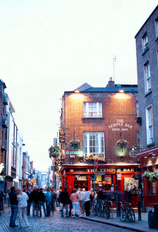Author: Miriam Murcutt
Date of Trip: October 2014
Zimbabwe: Our canoe trip on the Zambezi among hippos and crocs – four-days on the river from Chirundu to Mana Pools.
Each day of our canoe journey, Richard and I and our five fellow travelers woke up in the pink light of dawn, the hills of the northern Zambezi escarpment forming a vague horizon on the Zambian side of the river, while the tinder-dry bush country of Zimbabwe stretched away in a swirl of dust to the south.
We de-camped, downed tea and biscuits, and then paddled the river for a couple of hours while the air was cool and the river mirror-calm.
Around 9.00 a.m.we pulled the canoes onto a bank and Takesure, one of our Zimbabwean guides, cooked us breakfast on his one-burner, gas-cylinder stove. Then we put back into the river and canoed for three or more hours until the heat built up (by noon temperatures hit 95 degrees and above) and all we wanted was shade.
For much of the afternoon we lay idle and enervated on our sleeping mats under acacia trees. Sometimes, we stirred to monitor the hippo pods as they appeared and disappeared in the river. Through our binoculars we scanned yet more hippos slumped in tons of spreading flesh in the mud on the opposite bank, their torsos half in and half out of the water. (Takesure told us that although hippo skin might look tough as boot leather, it’s relatively sensitive to the sun. It dries out easily, he said, which is why hippos spend so much time in and near the water.) We saw elephants come to dip their trunks and squirt river water over their backs in a cooling shower. And we watched crocodiles, as long as our canoes, bask still and seemingly as innocuous as beached logs along the shoreline.
At 3.00 p.m., with the worst of the heat dissipated, we paddled off again, frequently to explore side channels and spot some of the bird life – the leggy saddled-billed stork, the white-hooded fish eagle, the lilac-breasted roller (so named because it rolls like an acrobat during its courtship flights), the goliath heron, pied kingfisher, hammerkop and (a personal favorite) the vivid carmine bee-eater whose nest holes pock-marked the mud of the river banks.
Constantly, we followed the lead-guide Zera’s instructions to steer our canoes either right towards the Zimbabwe side of the river or left towards the Zambian bank (Zim-Zamming rather than zig-zagging) to avoid the minefields of hippo pods or to get closer to the (relatively safe) elephants and water bucks feeding on the shore.
At dusk each night, we headed for one of the islands in the river and camped on their beaches. We washed behind trees from buckets of water which one of the guides delivered to us straight from the river. We slept under skies spattered with stars and were woken often by the sounds of grumping hippos and screaming hyenas.
Mana Pools is not a zoo; all the animals here are wild and all of them are unrestrained. We would not venture here alone or without the company of a trustworthy and knowledgeable guide.
Facts:
Zambezi River. At 2,700 kms (1,677 miles) it is the fourth longest river in Africa. Part of it forms the border between Zimbabwe and Zambia.
Mana Pools National Park. It is a wildlife conservation area and a UNESCO Natural World Heritage Site on the Lower Zambezi in northern Zimbabwe. It’s 2,196 square kilometers (848 square miles) in area and is part of the Parks and Wildlife Estate, which runs along the Zambezi River from Kariba Dam in the west to the Mozambique border in the east.
Safari Operators. There are a number of operators who offer canoe safaris of different lengths on the Zambezi. We chose to go on a three-night, four-day canoe journey organized by Natureways Safaris, which provided all the camping equipment (which was good), food (which was excellent and varied),and two well-informed and trustworthy local guides (who really made the trip worthwhile and enjoyable for us).
Transport to the river. We flew into Harare from Johannesburg on Comair because we had been traveling in South Africa. We hired a transport company – Hersov Tours – to drive us in a mini-van from Harare to Kariba and back. Natureways picked us up in Kariba and drove us to the river and back to Kariba after the trip was over.
In hindsight,on the way in to the river we should have stayed overnight in a pit-stop of a place called Makuti on the Harare-Kariba road rather than in Kariba. Makuti is much closer to Harare as well as to the canoe put-in place at Chirundu. Natureways could easily have picked us up there. Also, this would have saved us a lot of time and road travel on the way out as we could have got from the river to Harare on the same day.
Note: We canoed in late September, early October, towards the end of the dry season, and therefore one of the hotter times of year on the Zambezi.
We hand-pick everything we recommend and select items through testing and reviews. Some products are sent to us free of charge with no incentive to offer a favorable review. We offer our unbiased opinions and do not accept compensation to review products. All items are in stock and prices are accurate at the time of publication. If you buy something through our links, we may earn a commission.
Related
Top Fares From
Today's Top Travel Deals
Brought to you by ShermansTravel
Japan: 10-Night Kanazawa Tour, Incl. Kenrokuen...
smarTours - JNTO
 vacation
$4320+
vacation
$4320+
London to Reykjavik: Luxe, 10-Night Northern...
Regent Seven Seas Cruises
 cruise
$8175+
cruise
$8175+
Ohio: Daily Car Rentals from Cincinnati
85OFF.com
 Car Rental
$19+
Car Rental
$19+



